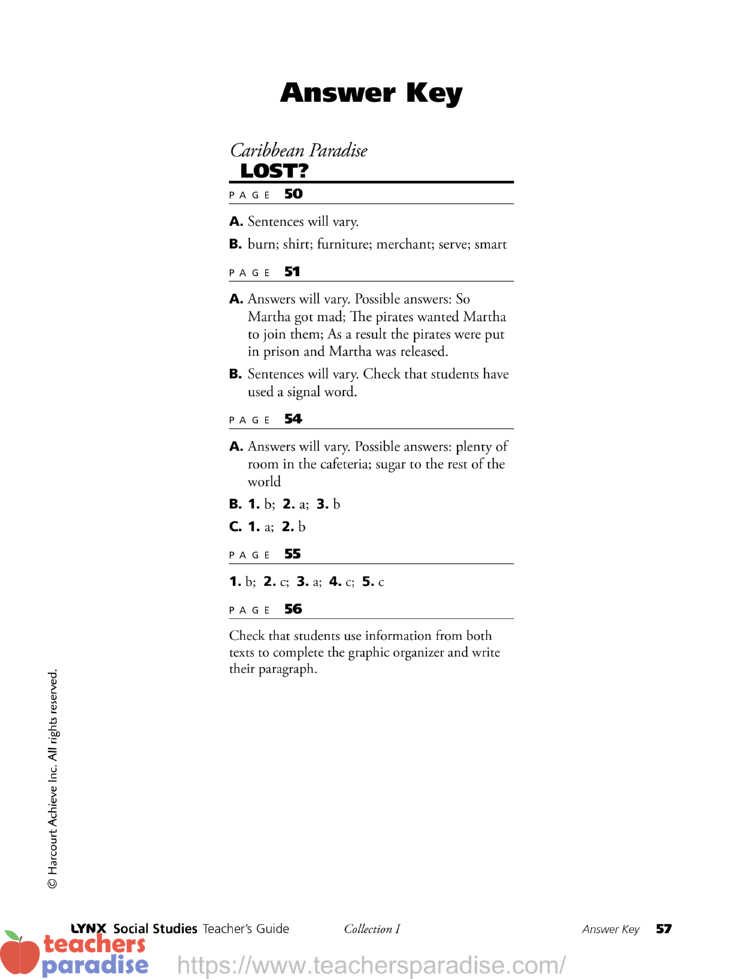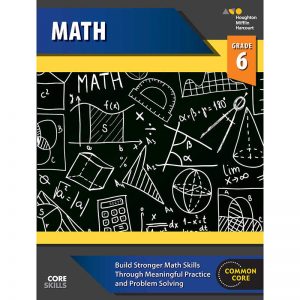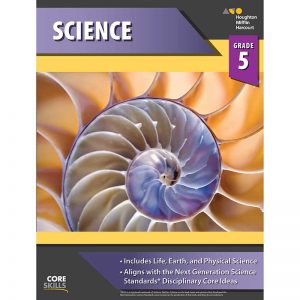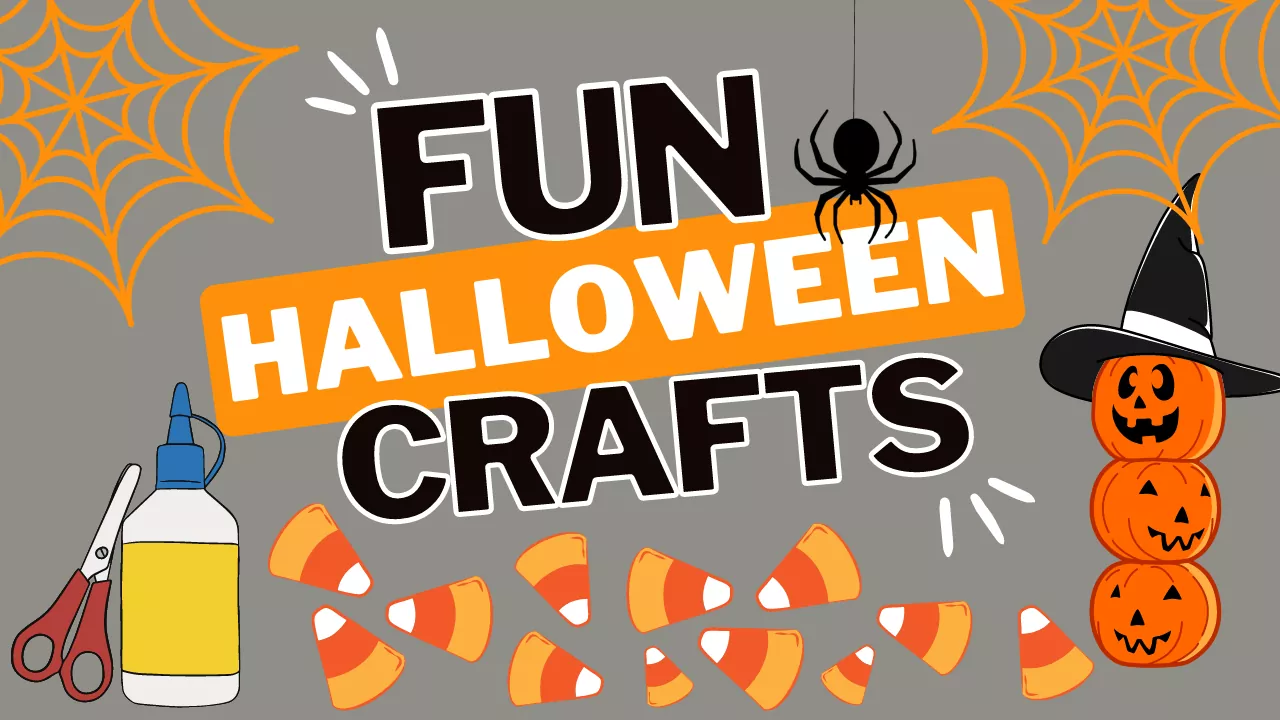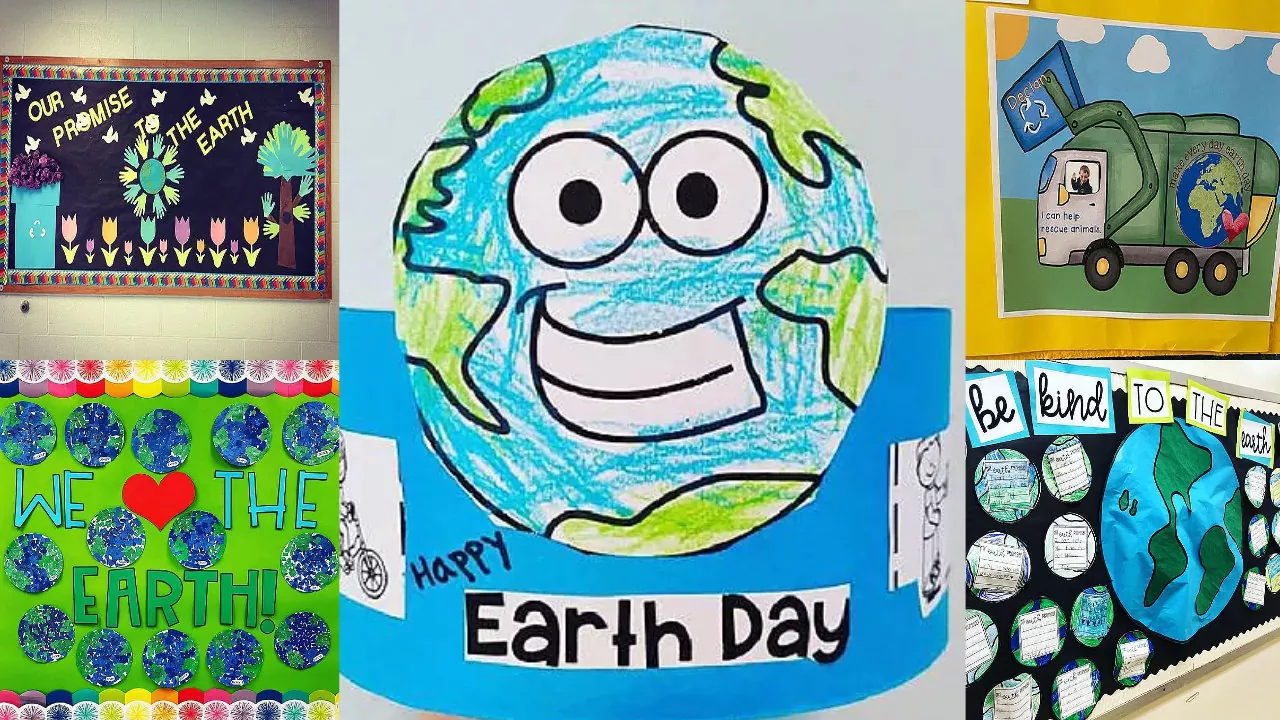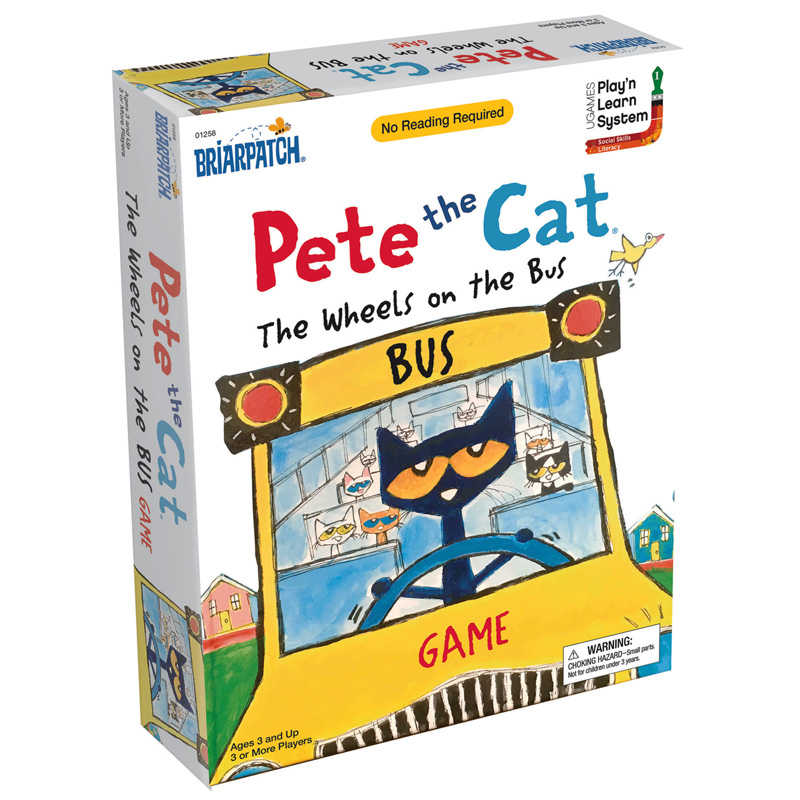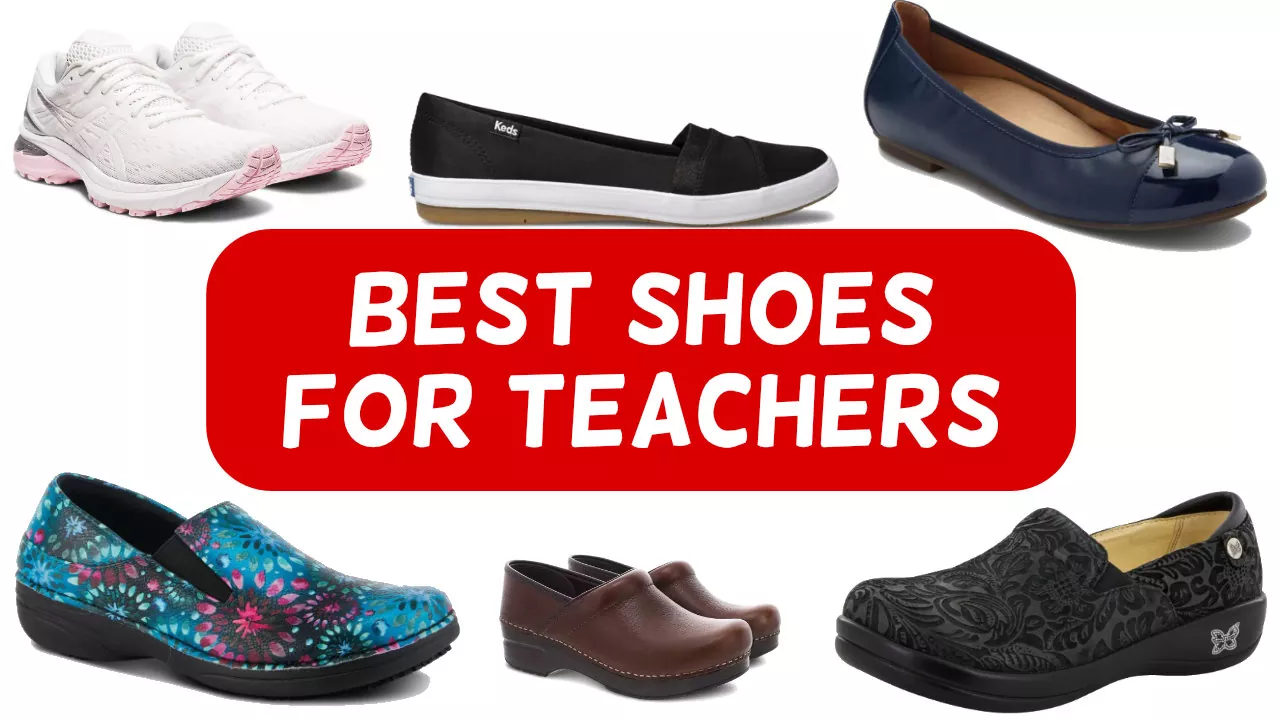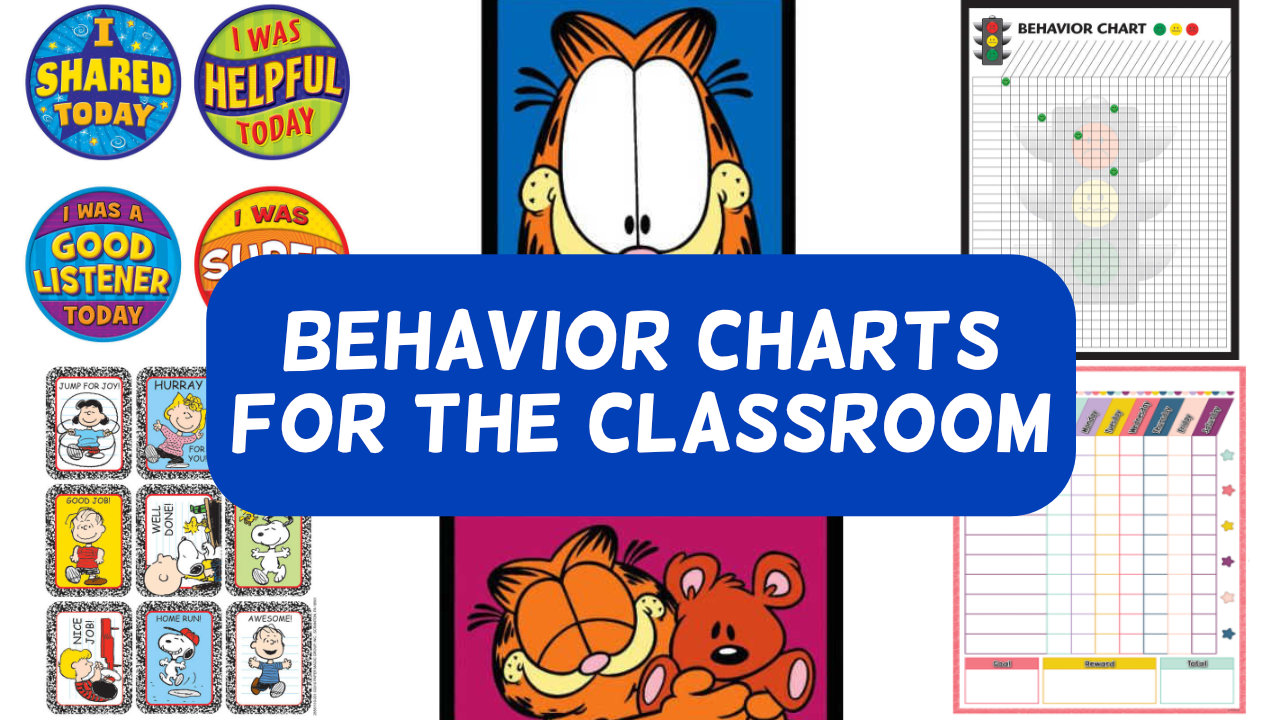Caribbean Paradise LOST?
GRAPHIC NOVEL
Summary
A teenaged girl living in eighteenth-century America leaves home to avoid an arranged marriage and to seek adventure. She dresses as a boy and joins the crew of a merchant ship, which is later attacked by pirates.
NONFICTION BOOK
Summary
The history of the island Hispaniola is reviewed. Haiti and the Dominican Republic, the two nations on the island today, are explored—in part through the eyes of two children who immigrated to the U.S.
Links to Social Studies
Why History Matters Changes occur in the meaning, use, distribution, and importance of resources.
World History
- Early European exploration and colonization resulted in cultural and ecological interactions among previously unconnected people.
- The importance of maritime expeditions between civilizations should be understood.
WORKSHEET & Sample PDF Activity
[adinserter block=”2″]
Sample PDF Activity
[adinserter block=”3″]
American History
The Americas attracted Europeans, they brought enslaved Africans to their colonies, and Europeans struggled for control of North America and the Caribbean.
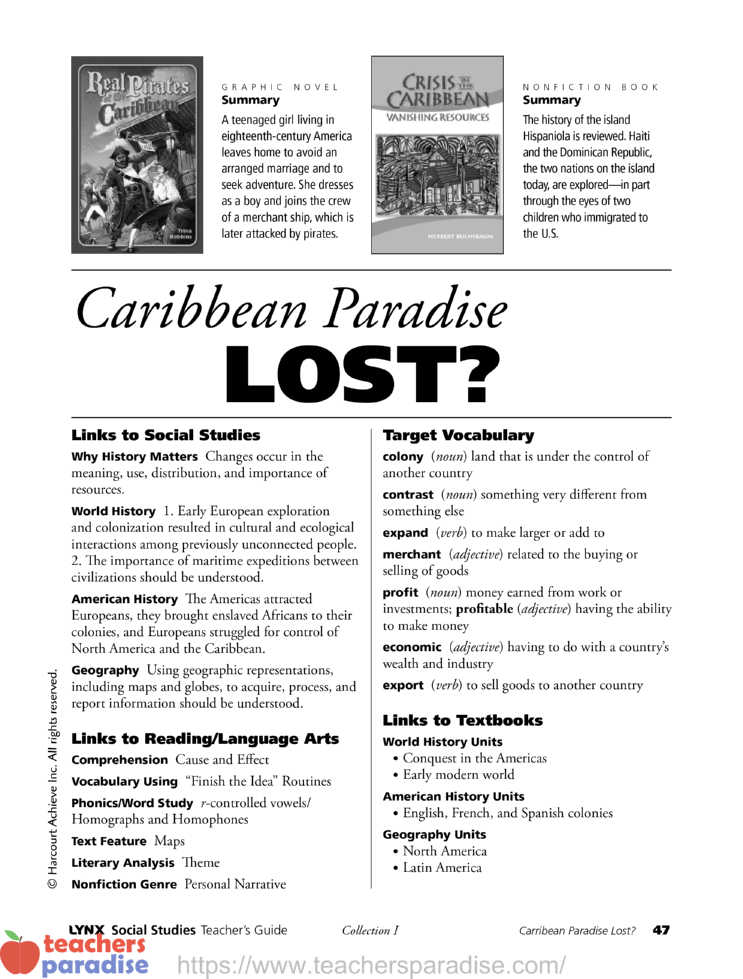
Geography
Using geographic representations, including maps and globes, to acquire, process, and report information should be understood.
Links to Reading/Language Arts
Comprehension Cause and Effect
Vocabulary Using “Finish the Idea” Routines
Phonics/Word Study r-controlled vowels/
Homographs and Homophones
Text Feature Maps
Literary Analysis Theme
Nonfiction Genre Personal Narrative
Target Vocabulary
colony (noun) land that is under the control of another country
contrast (noun) something very different from something else
expand (verb) to make larger or add to merchant (adjective) related to the buying or selling of goods
profit (noun) money earned from work or investments; profitable (adjective) having the ability to make money
economic (adjective) having to do with a country’s wealth and industry
export (verb) to sell goods to another country
Links to Textbooks
World History Units
• Conquest in the Americas
• Early modern world
American History Units
• English, French, and Spanish colonies
Geography Units
• North America
• Latin America
Caribbean Paradise GRAPHIC NOVEL
STEP 1 Introduce Theme
Make a Personal Connection
Ask students what kind of adventure they might like to go on. Ask if they’ve ever seen a movie or read about pirates. Invite students to tell what pirates are and what they do.
Build Theme Background
Ask How many of you like to eat things that are sweetened with sugar? Invite students to talk about where sugar comes from (sugarcane) and why it is often sold far from where it’s grown (grows in certain environments). Review with students the Big Ideas on page 2.
Preview Text
Distribute copies of Real Pirates of the Caribbean, and discuss the cover illustration. Ask What is happening on the cover? Who do you think these people are? Where is this happening? When?
• Next, preview what Martha says on pages 2 and 3. Ask What do you think will happen to Martha in this story?
• Have students preview pages 4–11 and make more predictions about the story and the characters.
STEP 2 Build Word Power
Teach Vocabulary Strategy: “Finish the Idea” Routines
Introduce the vocabulary on page 3. Explain that completing a sentence that contains a new vocabulary word is one good way to remember what the word means.
• On the board, write The balloon expanded until __. Invite volunteers to finish the sentence. Ask students to suggest the meaning of expand.
• Continue this process, creating sentences for completion using the other vocabulary words. (colony, profit, merchant, contrast)
Review Phonics: r-controlled Vowels
Explain that students can sound out more words if they learn the sound/spelling of vowels that are controlled by the letter r.
• Write the following sentence, then read it aloud as you point to each word: You are what you ate. Repeat the words are and ate, emphasizing the difference in the a sound. Explain that when a vowel is next to the letter r, the vowel’s sound often changes.
• Write these r-controlled words: worry, word, warn, harm, sir, first, surprise. Read each aloud, slowly blending the vowel sound and the r.
• Ask students to generate more words whose vowel sound changes because the vowel is next to an r. (third, burst, normal, bargain, start, born, curb)
Support English Language Learners: Comparatives and Superlatives
Show students three different-sized books. Point at each one and say: big, bigger, biggest. Write the suffixes -er and -est, and explain that some words have endings that compare.
• Point out safer on page 6. Say Martha might be safe on the ship, but she will be safer if she dresses as a boy. She would be safest if she stayed home!
• Preview other comparatives and superlatives students may encounter in this book. (hard, strongest, good, fast, small, fiercest)
STEP 3 Build Reading Power
Teach Comprehension Strategy: Cause and Effect
Explain that understanding why things happen in a story will help students understand what they read. The reason something happens is the cause. An effect is what happens as a result of the cause. Point out words that signal cause (because, led to, due to) and words that signal effect (as a result, outcome, therefore, consequently).
Model Comprehension Strategy: Cause and Effect
Write on the board The plant drooped because no one watered it. Explain that The plant drooped is what happened, so that is the effect. The reason the plant drooped was because no one watered it, so no one watered it is the cause.
Begin Reading Real Pirates of the Caribbean
Have students read pages 1–13. Remind them to think about cause and effect as they read.
Apply Comprehension Strategy
Have students find the signal word in this sentence on page 9 I knew because my real name is Mary Read. Have them name the implied cause (Mary was female too) and the effect (I knew).
• Ask students to explain what caused Martha to end up working on a ship. (She left home because she didn’t want to marry.)
STEP 4 Support Understanding
Show Literacy in Action: Maps
Point out the maps on pages 14 and 15. Ask Why was it a good idea to include maps on these pages? What do the maps help you understand? Who in the story might use maps? Why?
Focus on Literary Analysis: Theme
Explain to students that the theme of a story is what its overall, big idea is. Ask What were the pirates looking for on the ships? Why did the pirates steal from merchant ships? Have students discuss why greed might be one theme in the graphic novel.
Accommodate for Learning Differences: Theme Pictures
Invite students to draw pictures that show the greed of the pirates, such as pirates stealing goods from another ship or forcing their captives to work on the pirate ship. Encourage students to write captions for their pictures.
Finish Reading Real Pirates of the Caribbean
Remind students to confirm or revise their earlier predictions about the story and the characters.
STEP 5 Wrap Up Graphic Novel
Discuss Real Pirates of the Caribbean
Lead a class discussion using the following prompts:
• What caused Martha to be taken aboard the pirate ship? Why do you think Mary said what she did? What events happened as a result of Martha living on the pirate ship?
• What themes appear in this story? How is what Samuel wants different than what Martha wanted when she left home? What does the information about Samuel tell about pirates? about the Spanish colony? about the English colonies? What does Martha learn on her trip?
Practice Master 1
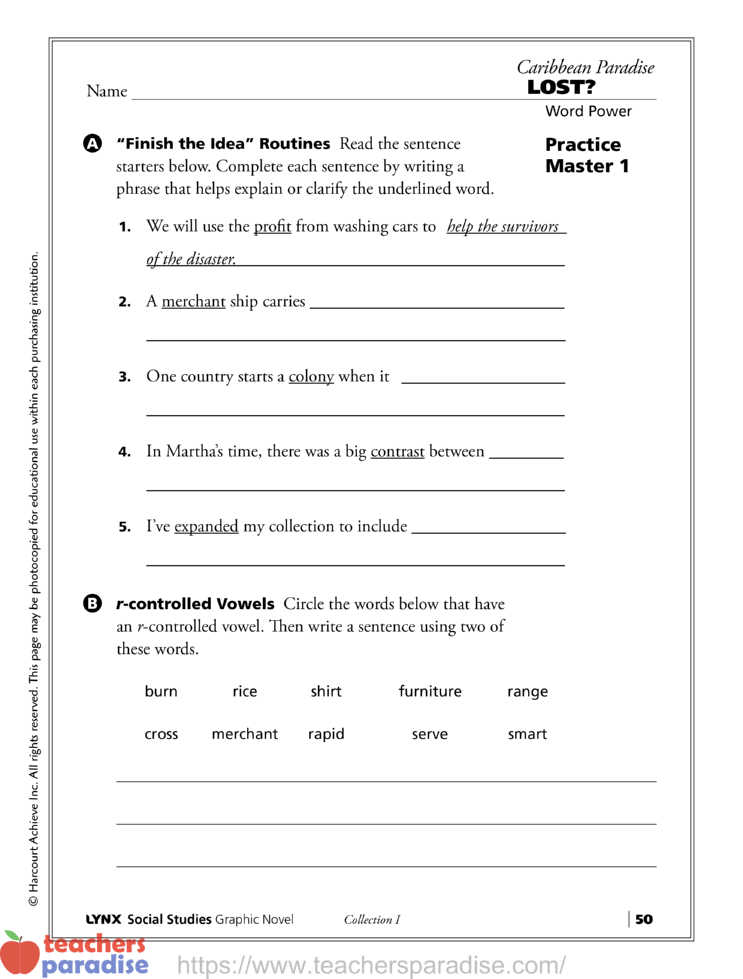
A. “Finish the Idea” Routines
Read the sentence starters below. Complete each sentence by writing a phrase that helps explain or clarify the underlined word.
- We will use the profit from washing cars to help the survivors of the disaster.
- A merchant ship carries
- One country starts a colony when it
- In Martha’s time, there was a big contrast between
- I’ve expanded my collection to include
B. r-controlled Vowels
Circle the words below that have an r-controlled vowel. Then write a sentence using two of these words.
burn rice shirt furniture range
cross merchant rapid serve smart
Practice Master 2
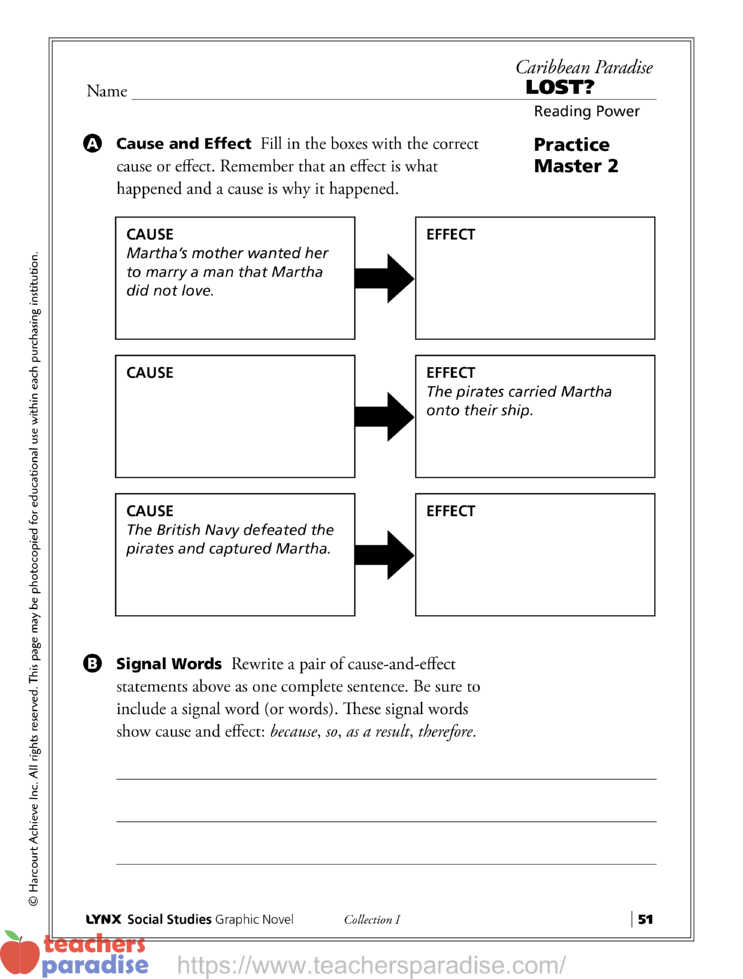
A. Cause and Effect
Fill in the boxes with the correct cause or effect. Remember that an effect is what happened and a cause is why it happened.
B. Signal Words
Rewrite a pair of cause-and-effect statements above as one complete sentence. Be sure to include a signal word (or words). These signal words show cause and effect: because, so, as a result, therefore.
Caribbean Paradise NONFICTION BOOK
STEP 1 Connect Theme Across Texts
Build Prior Knowledge from Reading
Review pages 14 and 15 in Real Pirates of the Caribbean with students. Ask What does Samuel say about escaped slaves in Florida? Where did these slaves come from? Why did they try to escape?
STEP 2 Build Word Power
Review Vocabulary Strategy: “Finish the Idea” Routines
Introduce the two new vocabulary words export and economic. Have students create sentence starters for each word, and then have other volunteers suggest phrases to complete the sentences. For example The island people export sugarcane because other countries cannot grow enough.
Teach Word Study Strategy: Homographs and Homophones
Explain that homographs are words that are spelled the same but have different meanings. Write mine on the board and use it in sentences where it has different meanings. (I worked in a coal mine. Th at pencil is mine.) Explain that homophones are words that sound the same but are spelled differently. Write sail and sale on the board, and use each in a context sentence. Invite students to tell the meaning of each homophone.
• List homographs from the graphic novel on the board, and invite students to use each in a context sentence. (fit, ship, miss, turn, saw)
• Do the same for the homophones from the book. (your/you’re, pair/pear, know/no, knew/new, right/write, here/hear, too/two/to)
Support English Language Learners: Facts and Opinions
Explain that some things students read may be facts, which can be proven. Other things may be opinions, which are someone’s feelings about the topic. Invite volunteers to reread page 5 of the graphic novel. Help students identify the facts on the page. (the year is 1719; in two years, Martha will be 16; she is 10 years younger than the man) Then identify the opinions on the page. (a girl shouldn’t be forced to marry; your father would have wanted this; girls must be wives and mothers) Invite students to work in pairs, taking turns stating facts then opinions about a topic.
STEP 3 Build Reading Power
Review Comprehension Strategy: Cause and Effect
Remind students that a cause is something that makes something happen. An effect is what happens. Read the Introduction of Crisis in the Caribbean. Ask students to describe what caused many Europeans to come to the Caribbean islands.
Begin Reading Crisis in the Caribbean
Have students read chapters 1 and 2. Remind them to use what they have learned as they read.
Link to Student Research Topics
To learn more, students can investigate:
• the recent unrest in Haiti
• the histories of other islands in the Caribbean
• the dispute with Cuba over custody of Elian Gonzalez
STEP 4 Support Understanding
Focus on Nonfiction Genre: Personal Narrative
Explain that a personal narrative is a story told by a person about his or her life. Readers are able to understand and listen to what the narrator lived through and experienced personally. Ask students to write down three things they would describe if they were to write their own personal narratives.
Focus on Text Feature: Maps
Have students look at the maps on pages 20 and 28. Help students understand that a map is a way of organizing information. Ask What information can you learn from these maps? Explain that sometimes the same information can be given in writing, but it might not be as clear as the graphic representation of a map or globe.
Accommodate for Learning Differences: Maps
Ask students to trace the map of Haiti from page 20 on the left side of a blank page. Students should then align the eastern border of Haiti on their traced page with the western border of the Dominican Republic map on page 28 and trace that map. Then, they will have a map of the entire island of Hispaniola to label.
Finish Reading Crisis in the Caribbean
Remind students to use what they have learned as they read.
STEP 5 Wrap Up Theme
Discuss Crisis in the Caribbean
Discuss with students the following:
• What other kinds of information would you have liked for Alix or Angela to include in their personal narratives?
• What caused Toussaint L’Ouverture’s rebellion? What was its result?
• If you saw several maps of Hispaniola from 1472 to the present day, how might the maps look different from each other? What about the country names, the number of towns, and the forest area?
Link to Why History Matters
Discuss with students some of the effects of greed in the two books. Explain that the misuse of natural resources and government funds effects not only the people in a country but even the land itself. Poverty and misery result from the over-exploitation of resources by companies, governments, or large groups of individual citizens. By seeing what happens when people use resources unwisely, we can better decide how to use our own resources and avoid destructive and selfish decisions.
Analyze and Write Across Texts
Have students use both books to list information about how the misuse of resources affects places and people.
• Assign students a short essay explaining the consequences of greed in the two books. Have them refer to Practice Master 5 to organize their ideas.
Link Theme to Textbook
Preview the headings, images, captions, and subtitles in: World History Units on early modern world and conquest in the Americas; American History Units on English colonies and Spanish colonies; or Geography Units on North America and Latin America. Have students make predictions based on what they’ve learned. They can confirm or revise predictions during reading.
Practice Master 3
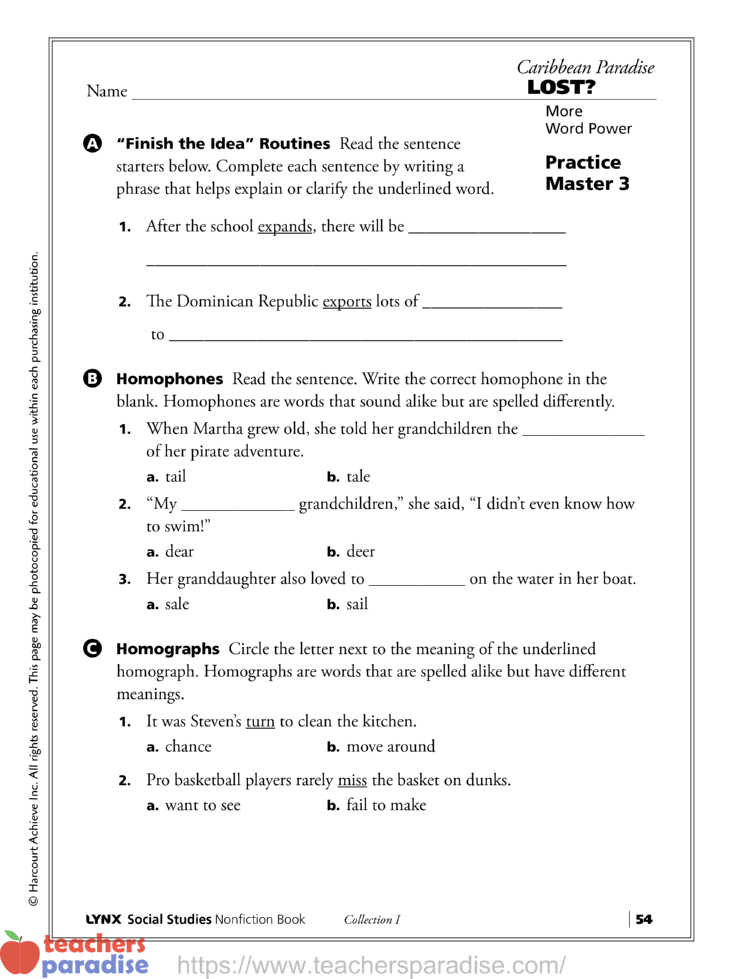
A. “Finish the Idea” Routines
Read the sentence starters below. Complete each sentence by writing a phrase that helps explain or clarify the underlined word.
- After the school expands, there will be ______.
- The Dominican Republic exports lots of ____ to _________________________________.
B. Homophones
Read the sentence. Write the correct homophone in the blank. Homophones are words that sound alike but are spelled differently.
- When Martha grew old, she told her grandchildren the __ of her pirate adventure.
a. tail b. tale - “My _ grandchildren,” she said, “I didn’t even know how to swim!”
a. dear b. deer - Her granddaughter also loved to _ on the water in her boat.
a. sale b. sail
C. Homographs
Circle the letter next to the meaning of the underlined homograph. Homographs are words that are spelled alike but have different meanings.
- It was Steven’s turn to clean the kitchen.
a. chance b. move around - Pro basketball players rarely miss the basket on dunks.
a. want to see b. fail to make
Practice Master 4
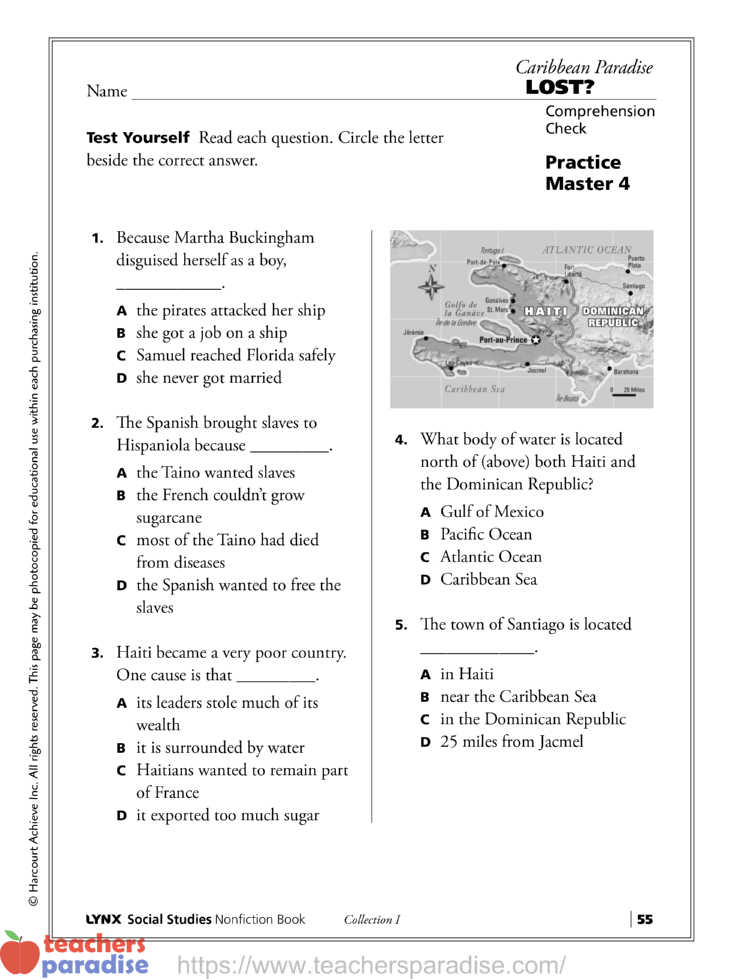
Test Yourself Read each question. Circle the letter beside the correct answer.
- Because Martha Buckingham disguised herself as a boy, __.
A. the pirates attacked her ship
B. she got a job on a ship
C. Samuel reached Florida safely
D. she never got married - The Spanish brought slaves to Hispaniola because _.
A. the Taino wanted slaves
B. the French couldn’t grow sugarcane
C. most of the Taino had died from diseases
D. the Spanish wanted to free the slaves - Haiti became a very poor country. One cause is that _.
A. its leaders stole much of its wealth
B. it is surrounded by water
C. Haitians wanted to remain part of France
D. it exported too much sugar - What body of water is located north of (above) both Haiti and the Dominican Republic?
A. Gulf of Mexico
B. Pacific Ocean
C. Atlantic Ocean
D. Caribbean Sea - The town of Santiago is located _.
A. in Haiti
B. near the Caribbean Sea
C. in the Dominican Republic
D. 25 miles from Jacmel
Practice Master 5
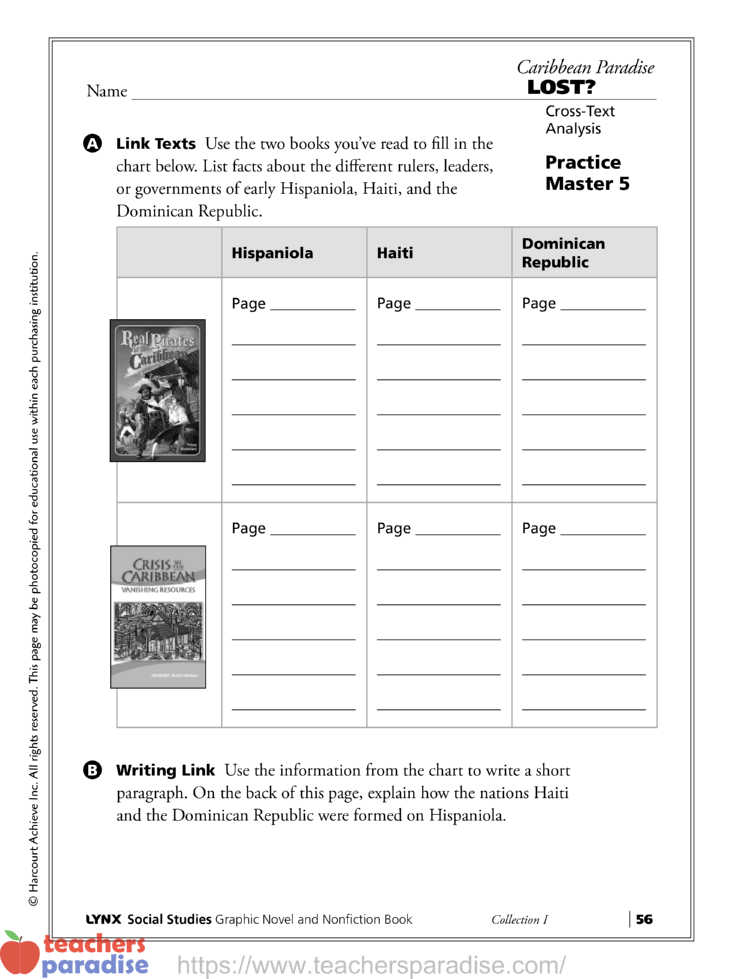
A. Link Texts
Use the two books you’ve read to fill in the chart below. List facts about the different rulers, leaders, or governments of early Hispaniola, Haiti, and the Dominican Republic.
B. Writing Link
Use the information from the chart to write a short paragraph. On the back of this page, explain how the nations Haiti and the Dominican Republic were formed on Hispaniola.

LYNX Caribbean Paradise – Answer Key
